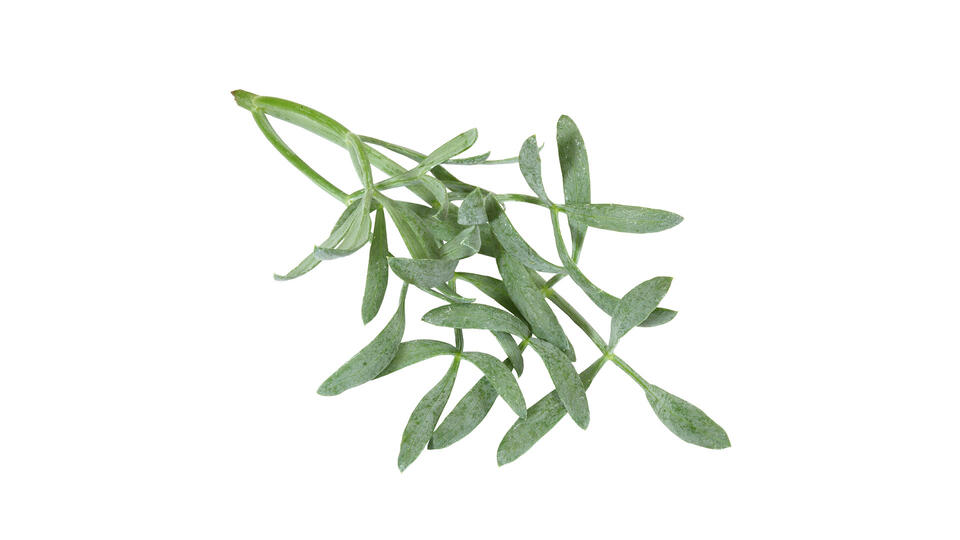
— LEAVES, BLOSSOMS, SPROUTS & CRESSES
Sea Fennel
Sea Fennel has a number of uses in the culinary field. Working with Sea fennel requires precise dosage due to its concentrated aromas. When it is blanched, the full asparagus flavour is most evident.
Availability Sea Fennel
Origin
A plant found from the beaches of the Black Sea to the coast of the North Atlantic ocean. Also found on mediterranean coastlines, but is a protected species under threat of extinction. A plant found from the beaches of the Black Sea to the coast of the North Atlantic ocean. Also found on Mediterranean coastlines, but is a protected species under threat of extinction. Sea Fennel is known to contain about thirty essential oils, such as gamma terpins (found in citrus fruits) sabinenes (found in carrots) beta phellandrenes (anis, sellery, fennel) and methylthymol (Thyme).


How to store
Sea Fennel is year round available and can easily be stored for up to nine days at a temperature of 2-7°C. Produced in a socially responsible culture, Sea Fennel meets the hygienic kitchen standards. The products only need rinsing, since they are grown clean and hygienically.
How to eat
Sea Fennel has a number of uses in the culinary field. Working with Sea fennel requires precise dosage due to its concentrated aromas. When it is blanched, the full asparagus flavour is most evident. Sea Fennel does well with fatty ingredients and is good in combinations with shellfish. The plant is also said to have a diuretic effect, to cleanse toxins and improve digestion. However, there is no scientific proof for this.
